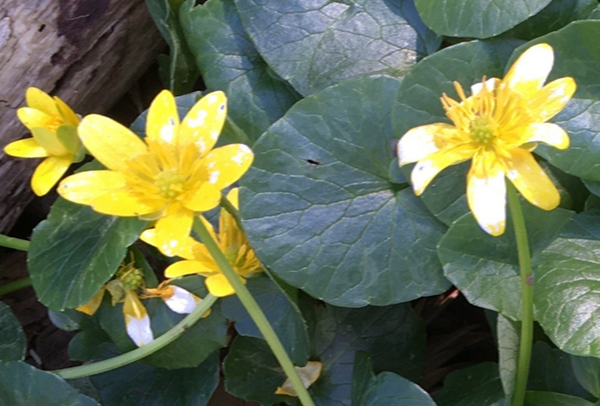Fig Buttercup: If You See It, Report It

As early spring flowers show their colors, please be on the lookout for an unwelcome yellow blooming plant.
The fig buttercup (Ficaria verna) is a low-growing green plant with rubbery heart-shaped leaves and 8 to 12 thin yellow petals. It can do a lot of damage to the native plants growing on Hillsborough’s stream banks and the lowlands along the Eno River. The plant forms many small bulbs, or bulblets, and quickly creates a thick carpet of plant material that chokes out native plants.
The fig buttercup blooms in February and early March, making this a great time to identify and eradicate the plant.
The Hillsborough Tree Board would like your help in preventing this invasive species from overrunning our community’s native plants by reporting sightings of the plant. The Tree Board asks that you not remove the plant on your own because it is easy to accidentally spread it. The plant spreads bulblets rapidly when disturbed.
If you think you may know where the plant is growing in our area, please report it to Administrative Support Specialist Lindsay Rhew by email or phone at 919-296-9600. Volunteers Holly Reid and Rich Shaw will then identify the plant and remove it.
The fig buttercup is sometimes confused with the native marsh marigold (Caltha palustris), which has round or kidney-shaped leaves and 5 to 9 yellow petals but no tubers or bulblets.
Hillsborough residents Reid and Shaw are part of a four-county team working to remove the fig buttercup under the direction of the North Carolina Botanical Garden and the North Carolina Invasive Plant Council. They have trekked through lowlands to identify and remove the fig buttercup since 2020. They also work with property owners to remove fig buttercup plants on private property in the most effective way.
“Last year we received a number of helpful sightings from members of the community,” Shaw said. “With that help, we’ve made substantial progress in eradicating this highly invasive plant from the upper Eno River watershed. This will be the fifth year of managing fig buttercup and we are pleased with our united efforts thus far.”
In addition to reporting possible locations of the plant, you can also help by telling your neighbors and friends about this invasive species.




